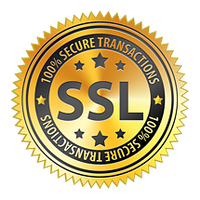This online snowboard lesson will go over Closing Your Turns Body Alignments. In steep terrain every little movement can cause a huge reaction. When I’m taking students out on steeper terrain I take a few runs on intermediate slopes to see what type of movement patterns they have and if they’re even ready to be on steeper difficult runs. Most the time I need to work with my students a bit before I take them to steeper areas. They need to be able to make turns using lower body movements and keeping their upper body aligned with their lower. After they are making turns with better alignment I like to take them to a run that has some mellow slope then steep and back less slope. This way the student can practice their movements on the way to the steep difficult terrain, then actually ride the steep advance terrain and then back to intermediate terrain. Other Snowboard Videos on YouTube & Flowing Freeride go over movements to teach you how to ride steep terrain. You’ll have access to all our snowboard tutorials when you signup that cover every step and feedback from your coach. We also have some free snowboard videos to prepare for Advance Snowboard Skills & Drills on our YouTube Page. I recommend watching these snowboard videos; Building Rhythm, Advanced Snowboarding Getting Air, Snowboard Dynamic Flex & Extend, Advance Snowboard Lesson: Dropping Cliffs, Snowboarding Off Piste, Snowboarding Chutes, Snowboard Lesson Navigating Trees & Obstacles, Active Passive Absorption, Upper/Lower Body Separation, Basic Carving: Circle Drills, Basics For Freestyle Features, Advance Snowboard Carving: Surfer Turns & Grab Carves, Funnel Turns For Navigating Obstacles, Snowboard Jibbing & Snowboarding Moguls. Learn to snowboard online with flowingfreeride.com, Take Our Placement Quiz, take a look at Our Blog for more free content, and Learn To Snowboard Right!
Human nature is to lean backwards when we are going forwards fast. Think about that. When you are moving down the mountain you gain speed and instead of leaning backwards you need to fight that urge to lean forward putting weight on your front leg. Let’s review what are alignments are. We want to be perpendicular to the slope. Our board, knees, hips shoulders are parallel to the slope. When you start to lean back on steep terrain snowboarding is harder because you’re using movements that are out of alignment. An easy fix to leaning back is to reach down towards the nose of your snowboard and grab it. Start doing this in a flat area so that you’re stationary or static. Then start snowboarding and at the beginning of your turns each for the nose of your board and at the end of your turn release and stand taller in your stance. As you feel more comfortable doing this drill start going on steeper slopes doing these movements. You will gain more confidence in your riding doing this movement pattern.
Speed and going down the mountain is what snowboarding is. We want to be able to control our momentum and that’s what I’m teaching in this snowboard tutorial. I just went over being aligned when you’re going down the fall line or parallel to it, now let’s focus on going across the fall line being perpendicular to it. I want my turn shapes to be the same size on both toeside and heelside edges. It happens all the time where people don’t finish their turns in steeps and then they carry too much speed for their next turn and skid. The fix to this is to turn up the hill on your turns for a second or two longer than you normally do. It’s usually the toeside edge that people do a quick short turn because they keep their upper body facing down the mountain creating upper body separation. Their bodies are out of alignment on their toeside edge and aligned on their heelside edge. To balance this out I’d have them spend more time on their toeside edge and have them look uphill to actually see what is behind them. When you finish a turn on your toes and look uphill you’re aligned. It’s a good idea to look uphill once in awhile when you make toeside turns. Clean up your heelside edge too by looking uphill to finish your turns. Finishing you turns is at the end get your board perpendicular to the slope or even turn up the hill the slow down your turns. This will keep you a symmetrical and balanced snowboarder.
To make faster more efficient turns in steep terrain bend your front knee excessively so that you can reach down and grab your nose on your snowboard at the beginning of your turns. As you finish your turns stop grabbing your nose, stand taller in your stance and look uphill to bleed off extra speed you gain from being in steep difficult terrain. Learn how to Rip Steep Terrain by keeping your body alignments good and finish your turns to stay in rhythm. You can practice efficiently with Snowboardclass/FlowingFreeride’s techniques so go back to earlier snowboard videos that teach you about stance alignments. You can signup to get access to all of our snowboard lessons, study guides, textbooks, glossary, tests and direct feedback from your coach. Learn to snowboard online with flowingfreeride.com and take a look at our YouTube Page for more free content and learn to snowboard right! My name is Blake Tholen Clark contact me if you want to book a lesson or have any questions about Snowboarding.


